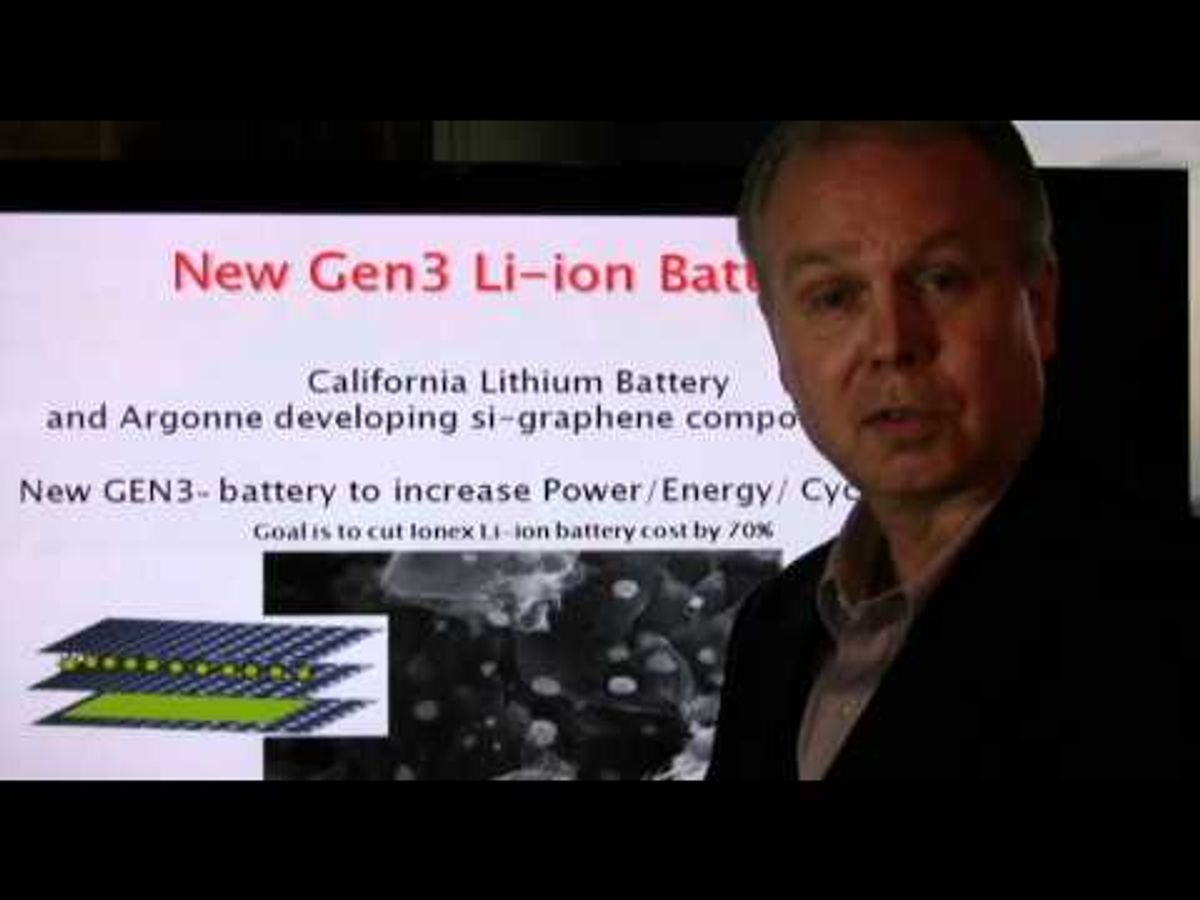The GEN3 battery is largely based on ANL’s silicon-graphene battery anode process. Basically the ANL approach is to sandwich silicon between graphene sheets in the anode of the battery to allow more lithium atoms in the electrode.
This line of research was motivated by the hope of improving the charge life of Li-ion batteries. First, researchers showed that if you replaced the graphite of the anodes with silicon, the charge could be increased by a factor of ten. There was one big drawback though. After a few charge-discharge cycles the silicon would crack and become inoperable from the expansion and contraction of the material. The solution seemed to be nanostructured silicon anodes that could last longer than the pure silicon variety, but just barely.
The ANL silicon-graphene anode is supposed to overcome this problem and achieve comparable charge-discharge cycles of graphite, but with the charge significantly increased like you would achieve with pure silicon in the anode.
So, what’s been happening in the last seven months? Well, CalBattery has released a press announcement revealing the results of their last eight months of testing. According to the press release, the Li-ion batteries they have been testing have an energy density of 525WH/Kg and specific anode capacity of 1,250mAh/g. To offer a comparison, the company press release explains that Li-ion batteries currently on the market have an energy density of between 100-180WH/kg and a specific anode capacity of 325mAh/g.
“This equates to more than a 300% improvement in LIB (Li-ion battery) capacity and an estimated 70% reduction in lifetime cost for batteries used in consumer electronics, EVs, and grid-scale energy storage,” says CalBattery CEO Phil Roberts in the company press release.
Curiously, I didn’t see anything in the press release that talks about what numbers they were able to achieve in charge/discharge cycles with the material. And that really is the crux of the matter. Everyone has understood for the last few years that nanostructured silicon anodes have a high capacity. The problem is that it has only been slightly better than regular silicon when it comes to charge/discharge cycles.
Let’s look at Energy Secretary’s threshold numbers for making Li-ion battery-powered competitive to petrol-powered vehicles:
- A rechargeable battery that can last for 5000 deep discharges
- 6–7 x higher storage capacity (3.6 Mj/kg = 1000 Wh) at [a] 3x lower price
Well, we don’t know what the deep discharge figures are for this GEN3 battery. But improving the capacity 300% seems to be a little short of factor of 6 or 7. But as it was pointed out to me in the comments a 70% reduction in lifetime cost does seem to meet the criteria of a 3x lower price.
Maybe EVs don’t really need to be competitive with petrol-powered vehicles, and Secretary Chu’s figures are not pertinent, but if the dwindling sales of EVs are any indication, maybe those figures are relevant and EVs actually do need to be competitive with petrol-powered vehicles…for now.
Dexter Johnson is a contributing editor at IEEE Spectrum, with a focus on nanotechnology.




